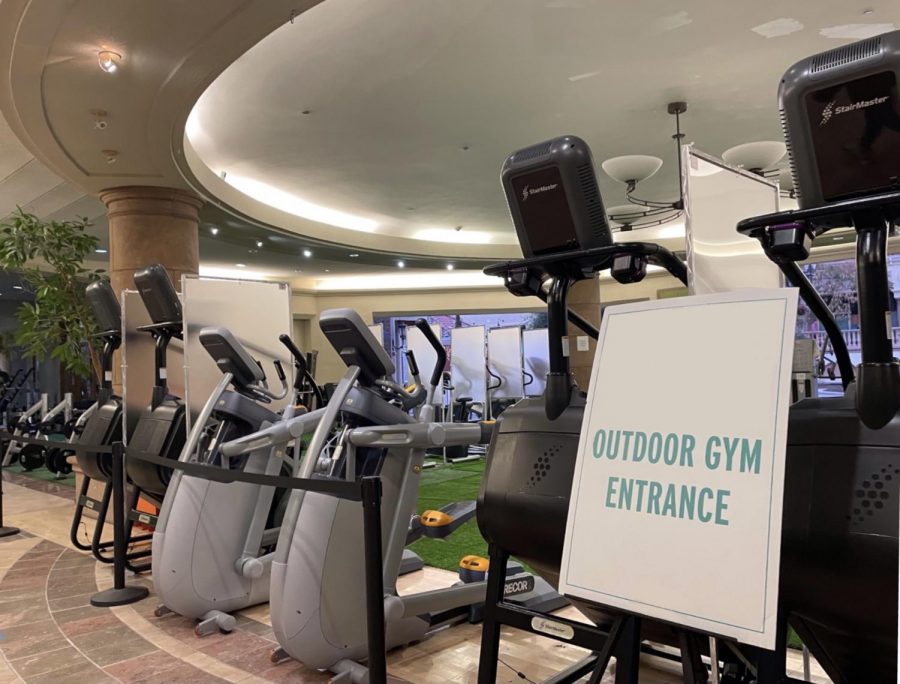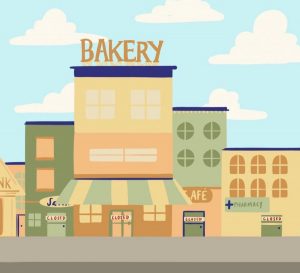Contra Costa County’s second lockdown may threaten small businesses
Due to the second lockdown, gyms were required to move business outdoors, resulting in more difficulties.
December 20, 2020
On Sunday, Dec. 6, 2020, Contra Costa County began their second lockdown which will last till Monday, Jan. 4, 2021. The new lockdown brings a sense of déjà vu – there are mask mandates in every corner, stay at home requirements are enforced, there is a curfew, and “we are closed” signs are prevalent. Though this new lockdown seems like reliving March 2020, it poses great consequences, from the decline of customers to small businesses that have to follow stringent rules.
Among the small businesses, many fitness centers are greatly impacted due to the first and second lockdown. Shelby White, the owner of Bollinger CrossFit, a fitness center in San Ramon, expresses the difficulties of operating a gym during this second lockdown.
“[Cold temperatures and the rain] make it hard to program workouts as well as actually run classes safely and effectively,” White said. “We have lost members due to the lockdown now as well as the lockdown before.”
Many businesses, such as Bollinger CrossFit, are resorting to different ways in order to survive and outride this second shutdown. White has relied on the recurring members that have continued to support them and hopes to ‘move back indoors very soon.’
The first lockdown in Contra Costa County happened on March 16th. Now California is in a state of chaos and the counties have started their second lockdown. Since Sunday, Dec. 6, 2020, there have been approximately 1.3 million COVID-19 cases in California with an additional 19,600 deaths. And as the second wave heightens, Gavin Newsom, the gov. of California, enforced stricter rules, trying to maintain this virus.
“That’s why we have to be very vigilant and very sober about what is going on,” stated Newsom.
Among 58 counties, only four are not in tier one, and Contra Costa is part of the 58. As the counties of California started to move into the most dangerous tier, tier one or the purple tier, restrictions were made such as adding a curfew or preventing large gatherings. However, this new lockdown differs from the first shelter in place that Contra Costa has experienced.
The first lockdown in Contra Costa firstly enforced all non-essential businesses to close. According to Contra Costa Health Services, during this first lockdown, people could only leave their homes for “essential activities, essential government functions, or for essential businesses.” Additionally, this order prohibited indoor and outdoor dining. The shelter in place was shown to be effective and has helped stop the incessant increase of cases.
Though this lockdown decreased the number of cases, it also brought an uncertain future to many local businesses.
“We closed for two months for the first lockdown due to lack of business. Although business dropped a lot in the beginning of the first lockdown, we didn’t see that big shift in the second lockdown,” said Sam Ng, the co-owner of Creme Si Bon.
Creme Si Bon, a local restaurant in San Ramon, experienced the same patterns that numerous small businesses have encountered – the decline of customers.
However, starting from Friday, June 5, 2020, Contra Costa started to reopen, providing a more hopeful future for nonessential businesses. As outdoor and indoor dining gradually started to open, people used their “get out of jail” cards and started to raid the stores. The consequences quickly came – malls overcrowded, cases rose, people gathered and partied, cases rose, people began to think less of COVID-19, and this cycle continued. Nonetheless, the “glory” days of reopening soon came to an end as Contra Costa County started to move from the orange tier, to the red, and finally into the purple.
Now, Contra Costa is in a full lockdown with stricter regulations. The new shelter in place began on Sunday, Dec, 6, 2020 and will specifically “remain in place until Monday, Jan. 4, 2021.” This new order includes many restrictions: from limiting indoor and outdoor dining to only allowing gyms to operate outside.
Due to COVID-19, approximately 100,000 businesses went under. According to a survey in Northeastern, about 25% of small business restaurants have closed and about 28% of health and beauty small businesses have closed as well.
“We understand that the closures under the State order will have a profound impact on our local businesses. However, if we act quickly, we can both save lives and reduce the amount of time these restrictions have to stay in place, allowing businesses and activities to reopen sooner,” stated Dr. Sara Cody, a Health Officer in Santa Clara County.
With a vaccine slowly arising and this second shelter in place, it is possible that California may be able to end the exponential increases of COVID-19 cases and start reopening once again – everyone will finally be wearing masks, restrictions will be alleviated, there will be no curfew, and “we are open” signs will be permanent.





